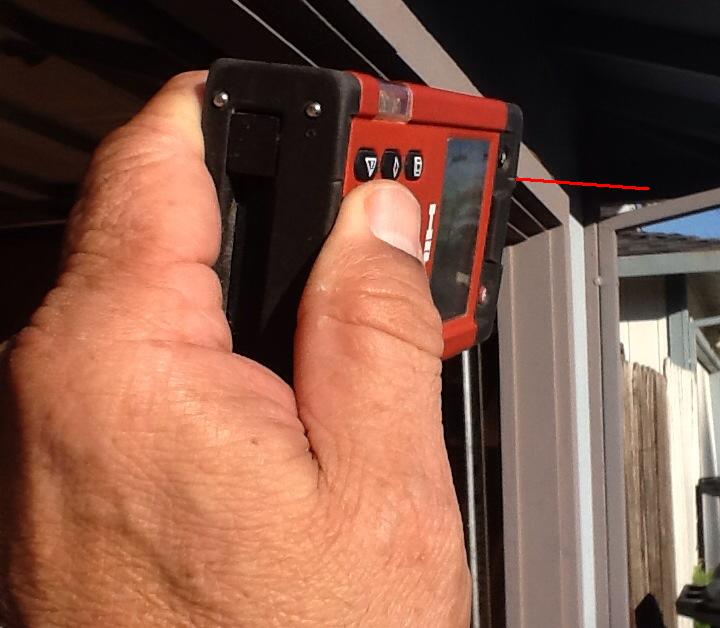Tools and Tips to Measure a Roof

Measuring a roof can be easy or hard. It depends on the type of house you are trying to measure.
Most roofers rely on getting up on the roof to take lengths and widths of the build. This works great except when the roofs are steep are difficult to access and navigate, when they are really tall roofs that need long ladders just to get to the eaves, and then the real cut-up ones with many facets that are hard to draw out. Many contractors purchase aerial reports now available to measure those difficult houses.
I am very lucky to have spent a lot of time in, on and around the roofing trade. So, having that understanding of the anatomy of a roof. Using that, I have designed a great way to measure roofs, safely and accurately and rarely need to access any roof to get measurements.
One of my favorite tools is made by Hilti and called a laser range meter. Now I know there are some old-timers out there that will laugh, but hear me out. This measuring device is very helpful if you use it wisely. It is just like any other tool in the toolbox, knowing how to use it and knowing the limitation of the tool are key to success. I bought my first lasers in 2004 and would never estimate another roof without one. The best features are extremely accurate, battery life is very good and the Hilti PD series are easy to use.
I hold the device in line with a starting place eave, take aim to the opposite eave, by shooting the back of a gutter or fascia board, is as simple as pushing a button. I continue walking around the building gathering measurements and logging them on a grid sheet I designed and this provides me with the footprint of the house. Then using math I can figure the pitch, rakes, valley, and hips. I use a two-foot scale grid sheet and it works well for me. When I get a larger building I just tape to papers together. Using this grid sheet and drawing the house as you take the measurements, gives you a nice perimeter and you should finish exactly where you started. If not, you know automatically and can correct your mistake on site.
I use a rafter book or pitch factors to gain the slopes, valley, and hips. Ridge on the gables is simple math [ length of eave plus 1/2 of the span. ] Using these few tips can save a lot of risk walking on a wet slippery or steep-sloped roof.
Have a question? AskARoofer.
Find your local roofing contractor in the RoofersCoffeeShop® Contractor Directory.
Disclaimer: The information provided on AskARoofer.com or information sent by emails is the opinion of the writers. It is the responsibility of the reader to check for accuracy in one's own jurisdiction, as there are different codes and restrictions for different parts of the country. AskARoofer.com does not accept any liability for the use of information on this website or email. AskARoofer.com has no controls over product failures, installation, or climate conditions that may change the roofing process in your area. Our information is in general to our area and cannot be the same as your local town or state. It is advised to seek the local Building Department, Licensed Contractor and local Product Representative for proper installation requirements and code enforcement when installing a new roof.







Comments
Leave a Reply
Have an account? Login to leave a comment!
Sign In